How To Draw Yourself As A Dbz Character
- This article is about the author of Dragon Ball. For the author's in-universe avatar, see Akira (character).
| This article is about the | |
"Actually, it's the first time that I've been involved deeply in the production of animation from scriptwriting. I've forgotten many things because it has been a while, but as expected of the original author, I was soon able to get the tempo back. This movie will have the original atmosphere and a little bit of modern flavor, so I believe it will be a wonderful entertainment just like old times!"
— About his involvement with Dragon Ball Z: Battle of Gods, July 2012
Akira Toriyama (鳥山 明 , Toriyama Akira ) (born on April 5, 1955, in Nagoya, Aichi Prefecture) is a widely acclaimed Japanese manga artist and character designer who lives in Kiyosu. He is most famously known for his creation of Dr. Slump in 1980 and Dragon Ball in 1984.
Contents
- 1 Personality and personal life
- 2 Biography
- 2.1 Childhood and debuts (1955-1979)
- 2.2 Dr. Slump (1980-1984)
- 2.3 Dragon Ball (1984-1995)
- 2.4 Other success (1985-2008)
- 2.5 Other works (2008-present)
- 3 Designs by Akira Toriyama
- 4 Works
- 4.1 Manga
- 4.2 Movies
- 4.3 Game design
- 4.4 Object design
- 5 Quotes
- 6 Trivia
- 7 Gallery
- 7.1 Photos
- 7.2 Cover flap images
- 7.3 Autographs
- 7.4 Scale models
- 8 See also
- 9 References
- 10 External links
- 11 Site Navigation
Personality and personal life

Akira Toriyama with his son, Sasuke (DB volume 11, cover flap, 1987)
Akira Toriyama is a shy and reserved person who does not like interviews. His manga, including all of the 42 volumes of Dragon Ball, contain certain cover flap images that reference Toriyama's real life. It is mainly through those autobiographical elements that one can learn about his life. Most of the images contain drawings of an animated Toriyama, busy creating new manga ideas, or frustrated with work. A few cover flap images are real-life pictures of him, his pets, and his children.
Akira Toriyama likes girls with short hair.[1] He married the shojo manga artist Nachi Mikami[1] (referred to as "Yoshimi" in the final volume of Dr. Slump)[2] in 1982, and they have two children: a son named Sasuke, born in April 1987,[1] and a daughter, Kikka[3], born in late 1990.
During his career, Toriyama created over 40 manga series. Akira Toriyama has always been very concerned about his work, not hesitating to redraw again and again the same illustration because he does not find it perfect. Thus, he spent many sleepless nights working, and often complains of lack of free time. Conversely, he hates to dwell on an illustration, wanting to finish it in one draw as soon as possible in order to quickly judge the result.
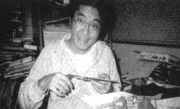
Akira Toriyama working on a scale model (1983)
Toriyama prefers to live in quieter rural areas where he can devote himself to both his work and his family rather than in big cities. The assembly of scale models is one of his biggest hobbies; he possesses dozens of models, and often finds himself assembling models instead of working.[4] Toriyama loves animals and has raised many; at the time of Dr. Slump, he owned two dogs named Turbo(-maru) and Turbo II,[4] a cat named Ohiru, and many birds. At the time of Dragon Ball, he owned a Siberian husky named Matryoshka (nicknamed "Mato"), and he also had a black cat called Koge.[1] After Mato's death in 1995, he began taking care of a Welsh Corgi dog named Toma (depicted on the cover flap of Kajika), and starting in 1999, a Cornish Rex cat (upon which he based the design for the character Beerus, as well as some elements of Neko Majin),[5] and many birds. Akira Toriyama enjoys playing video games, watching movies (his favorites being Alien and Galaxy Quest), taking the air with his dog, and riding motorcycles (a passion that never left him since he got his license in 1984). Ironically, he claims that he does not have much interest in manga and anime, saying that he enjoyed it until he was about 11, after which his interest shifted to movies. Toriyama's greatest pleasure is having a great family life.
Biography
Childhood and debuts (1955-1979)
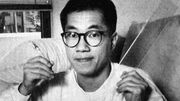
Akira Toriyama in 1985 (Hetappi Manga Kenkyūjo)
Akira Toriyama was raised by his parents in Kiyosu, Aichi Prefecture, and also has an older sister,[6] who has at least two children.[4] [7] He spent his childhood and much of his formative years in Kiyosu, what was then a largely rural area just outside Nagoya. Since an early age, he had a passion for drawing and was influenced by the productions of the time (Disney movies and Osamu Tezuka's Astro Boy). However, after his primary school years, his interest in comics and cartoons dwindled, and his attention shifted to live-action movies such as Westerns, war films, and science fiction. Toriyama entered a technical high school in Nagoya to study design, which allowed him to focus on drawing. Against the wishes of his parents, after his last high school year, Toriyama decided not to continue his studies at university and began his working life. He had his first job at 20 years old as an in-house graphic designer at a small advertising firm in Nagoya. He resigned two and a half years later, largely because he resented the workaday routine.
In 1977, Toriyama was seeking employment when he discovered the Monthly Young Jump Award, a contest sponsored by Shueisha, the largest manga publishing company in Japan. He participated in the contest twice, with Awawa World in 1977 and Mysterious Rain Jack in 1978, but he did not win (the latter work was outright disqualified due to its Star Wars parody elements). However, after Mysterious Rain Jack, Toriyama received a call from Kazuhiko Torishima, an editor for Shueisha's Weekly Shōnen Jump, who told him not to give up and to try harder.
A few months after Torishima's phone call, Toriyama made his first published manga, Wonder Island. Published in Weekly Shōnen Jump magazine issue 52 in 1978, it failed to catch readers' attention. The following year, Toriyama offered several new manga projects that were refused. This dark period could have ended his ambitions, but the minor success of Tomato, Girl Detective in 1979 gave him some hope.
Dr. Slump (1980-1984)

Akira Toriyama working on Dr. Slump volume 13 (1983)
In January 1980, Akira Toriyama achieved his first great success, Dr. Slump. He first gained fame from this manga, which was published in Weekly Shōnen Jump from January 1980 to August 1984. The series was also published in eighteen tankōbon volumes. Soon, letters of encouragement from readers began to rain. During the years 1981 to 1984, Akira Toriyama created a large number of short manga that fared well; notably Pola & Roid which allowed him to win the 1981 contest for the best Shōnen Jump manga artist, and Pink (1982). While he was drawing the wedding of the Dr. Slump characters Senbei Norimaki and Midori Yamabuki, Akira Toriyama himself married the shojo manga artist Nachi Mikami[1] (referred to as "Yoshimi" in the final volume of Dr. Slump)[2] in 1982. His wife stopped her career after this occasion. Also in 1982, Toriyama's Dr. Slump won the Shogakukan Manga Award for the best shōnen or shōjo manga series of the year.[8] These initial success allowed Toriyama to get a place among the new manga artists of the time, including Masakazu Katsura, who would become one of his best friends and with whom he would collaborate several years later for several manga.
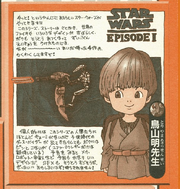
Toriyama's tribute to Star Wars (Weekly Shōnen Jump nº25, 1999)
It is difficult to pinpoint the source of Toriyama's artwork inspiration at this point. He admires Osamu Tezuka's Astro Boy,[1] which he considers the creator an inspiration, he is a big fan of Godzilla and Ultraman, and he was impressed by Walt Disney's One Hundred and One Dalmatians, which he remembers for the great art. Jackie Chan's films, notably the Drunken Master movie, also influenced him greatly. Akira Toriyama has also stated that he is a big fan of the Star Wars series;[4] his second manga, Mysterious Rain Jack (1978), is a Star Wars parody, the Star Wars character C-3PO appears in Wonder Island 2, R2-D2 and a Stormtrooper appear in Dr. Slump chapter 14, Senbei and Arale Norimaki are disguised as C-3PO and R2-D2 on the cover of Dr. Slump chapters 16, several Star Wars characters appear on the cover of Dr. Slump chapter 25, Arale and Gatchan appear disguised as Luke Skywalker and Darth Vader on the cover of Dr. Slump chapter 29, and Yoda has a cameo in Dr. Slump chapter 41.
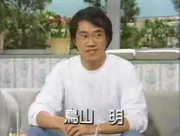
Akira Toriyama interviewed in the TV program "Tetsuko's Room"
The success of Dr. Slump is such that the production company Toei Animation created two animated television adaptations: Dr. Slump and Arale-chan that ran from 1981 to 1986 on Fuji TV and spanned 243 episodes, and a remake titled Dr. Slump that ran for 74 episodes from November 26, 1997, to September 22, 1999. There are also eleven movies based on the Dr. Series, including one based on the 1997 remake. Prior to the 1997 anime remake, a four volume manga sequel was made by Takao Koyama and Katsuyoshi Nakatsuru, Dr. Slump Returns, But Only For a Little While, which ran from 1994 to 1996. Toriyama himself later made a short sequel to Dr. Slump, titled Dr. Mashirito and Abale-chan (2007).
From Dr. Slump, Toriyama wanted more than anything to keep some independence and founded his own working studio, Bird Studio, in 1983. That same year, he created two new manga, Dragon Boy and The Adventures of Tongpoo, that were prototypes for his following manga series, Dragon Ball.
Dragon Ball (1984-1995)
Dragon Ball was one of the linchpins for what is accepted as the "Golden Age of Jump". The success from Dragon Ball encouraged Akira Toriyama to continue working on the series from 1984 to 1995. During that 11-year period, he made 519 chapters collected into 42 tankōbon volumes. Each volume has an average of 200 pages, so the entire Dragon Ball storyline extends to almost 9,000 pages.
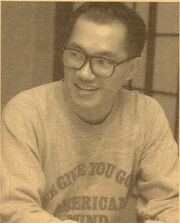
Akira Toriyama in 1990 (Toriyama - The World)
Toriyama had three editors for his manga series: Kazuhiko Torishima who worked with Toriyama for his first manga series, Dr. Slump, and the first half of the Dragon Ball manga; Yū Kondō who was involved with Dragon Ball during its most popular times; and Fuyuto Takeda who took over the position during the Perfect Cell Saga and also served as Toriyama's editor for post-Dragon Ball works. Akira Toriyama had only two assistants during his career: Hisashi Tanaka who worked on the first half of Dr. Slump and Takashi Matsuyama who was Toriyama's assistant for the second half of Dr. Slump, the whole Dragon Ball manga and post-Dragon Ball works.
The benefit of the Dragon Ball quickly led to the creation of three animated television series (Dragon Ball, Dragon Ball Z, and Dragon Ball GT) by Toei Animation, feature-length animated movies, and video games. Unlike Dragon Ball and Dragon Ball Z, Dragon Ball GT was not based on Akira Toriyama's original manga, instead being created by Toei Animation as a sequel. As the original creator of Dragon Ball, Akira Toriyama attended production meetings to provide input on the progression of the series, as well as give general thoughts on expanding upon the original material for the three anime series, and even providing character designs and the sketches for filler and movie characters. The Dragon Ball animes spawned over 500 episodes made in Japan, and are produced and licensed for North America and Australia by Funimation.
Other success (1985-2008)
- Manga and video games

Akira Toriyama with Akira Sakuma (1983)
With Akira Sakuma, Akira Toriyama co-authored Hetappi Manga Kenkyūjo, a manga in which he explains how to create a manga. It was originally published in Fresh Jump between October 1982 to March 1984, and was made into one volume in 1985. Akira Toriyama's clean line and design sense led to jobs designing characters for the phenomenally popular Dragon Quest series of role-playing games (formerly called Dragon Warrior in North America) since 1986, as well as its second anime adaptation Dragon Warrior: Legend of the Hero Abel which started in December 1989 on Fuji TV. Several Dragon Quest monsters designed by Toriyama make cameo appearances during the preliminaries of the 22nd World Martial Arts Tournament in Dragon Ball.
In 1988, he created the puppet characters of a short film titled Apple Pop that was shown in April in Hirake Ponkikki, a Japanese TV program for children. That same year, Toriyama produced his first animated film, Kosuke & Rikimaru - The Dragon of Konpei Island, lasting one hour and featuring two young samurai who are the guardians of the island of Konpei on which lives a dragon. He worked in person on the animated movie adaptations of his manga Pink and Kennosuke-sama, shown as part of a triple feature with Dragon Ball Z: The Tree of Might during the Toei Anime Fair in July 1990.[9] [10] This same year, he started a new manga series titled Cashman - Saving Soldier which was published in V-Jump. A sequel to Cashman - Saving Soldier supervised by Akira Toriyama was made in 1998 by Takao Koyama and Katsuyoshi Nakatsuru, titled New Cashman - Saving Soldier.

The Apple Pop wolf family that was designed by Akira Toriyama (Toriyama - The World)
In 1993, he wrote Go! Go! Ackman, a manga that has been adapted into a series of three platform games for the Super Famicom and a maze chase game (similar to Pac-Man) for Game Boy between 1994 and 1995. Go! Go! Ackman was also adapted into a fifteen-minute animated movie that premiered at the 1994 V-Jump Festa. Between 1993 and 1995, exhibitions of works by Toriyama (Akira Toriyama Exhibition) had locations in major cities in Japan, and collected more than 400 000 visitors in three years. Toriyama was also the character designer for the Super Famicom, PlayStation, and Nintendo DS RPG Chrono Trigger (1994, 1999, and 2008), the fighting games Tobal No. 1 (1996) and its sequel Tobal 2 (1997) for the PlayStation, as well as the Mistwalker Xbox 360 exclusive RPG Blue Dragon (2006) and its anime adaptation (2008).[11]
Akira Toriyama stopped his Dragon Ball manga in 1995 in an open end, wanting to take a break and leisurely draw shorter stories.[12] This same year, he gave several interviews for the Daizenshuu, a series of books which contain encyclopedic coverage of the Dragon Ball series. Toriyama's works after Dragon Ball was indeed short stories (100-200 page) and include Cowa! (1997–1998), Kajika (1998–1999), Sand Land (2000), and Nekomajin (1999–2005). He designed new covers when the Dragon Ball manga was re-released from December 4, 2002 to April 2, 2004 as part of the 34 volume Kanzenban collection, and he also slightly rewrote the final four ending pages.

LISA, scale model as originally designed by Toriyama (1986)
In 2003, Toriyama made a children's book titled Toccio the Angel. Toriyama's Bird Studio designed their own electric car in 2005: the QVolt. In winter 2006, Akira Toriyama worked on a one-shot called Cross Epoch in cooperation with the One Piece creator Eiichiro Oda. In 2007, Toriyama made a short sequel to Dr. Slump, titled Dr. Mashirito and Abale-chan and published in the fourth issue of the Weekly Shōnen Jump.
- Scale models
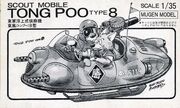
Scout Mobile Tongpoo, as designed by Toriyama (1987)
In 1984, Akira Toriyama met Kunihiro Suzuki, a man who work in the mid-scale models, by his assistant Takashi Matsuyama. Two years later, in 1986, Kunihiro Suzuki called Toriyama to help him in his task of creation for a model of female auxiliary of the Wehrmach named LISA. Toriyama realized the design of the box and the assembly instructions. It was the first model in the market that was designed by "amateur". The model LISA came in a very limited edition, and was very successful. In September 1987, the duo reformed with this time a futuristic hovercraft they named Scout Mobile Tongpoo. Just as Lisa, Scout Mobile Tongpoo was a success.
Kunihiro Suzuki finally ended up creating his own company in 1991, named Fine Molds and based in Nagoya, close to Toriyama's Bird Studio. After two successful collaborations, it is natural that Kunihiro Suzuki asked Toriyama to make the company logo. In 1999, Toriyama gave a facelift to the company logo, and based it on the company's dog. For the occasion, a model of the dog was produced for a contest.

Armour Modelling cover drawn by Toriyama (2008)
In 1992, the collaboration between Kunihiko Suzuki and Akira Toriyama reborn for three years for a new collection named World Fighter Collection. The series consists of seven models of soldiers (the same number as the Dragon Balls) with emblematic weapons. Akira Toriyama made the assembly instructions and the packaging. The first character came out in fall 1992: a waffen SS with a Czech ZB-26 machine gun that Toriyama drew in SD. The second model is a U.S. Army soldier with a Thompson M1A1. The third is a Japanese military with a 38 6.5 mm type rifle. The fourth is a woman of the USSR Army with a PPSH1941. The fifth is a woman of the U.S. Army with a Colt M16A2. The sixth is a man of the German army with a MG 34. The seventh and last is a Japanese military with a Type 64 Assault Rifle that came out in 1994.
In 2008, the magazine specialized in scale model Armour Modelling held a contest with the help of Fine Molds. Akira Toriyama is requested for two covers of the magazine, and the design and implementation of the model. The result of this work was shown at the Model Hobby Show 2008.
Other works (2008-present)
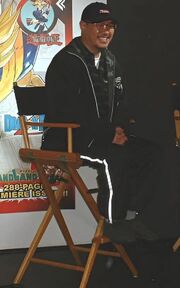
Akira Toriyama in New York for the launch of the U.S. Shonen Jump in 2002
"Hang in there!! To all the victims. This is truly awful, but please don't give up, and hang in there no matter what!"
— Akira Toriyama's message to the 2011 Japanese earthquake's victims
In 2008, Akira Toriyama began working on manga projects with his long-time best friend Masakazu Katsura. With Katsura drawing the illustrations and Toriyama writing the story, the two widely known manga artists made Sachi-chan Gū!! (2008) and Jiya (2009–2010); both were later collected into a single volume released on April 4, 2014 in Japan. In 2009, Toriyama was commissioned by Avex Trax to draw a portrait of pop singer Ayumi Hamasaki. This portrait was printed on the CD of her single "Rule/Sparkle".
Akira Toriyama made a new one-shot, titled Kintoki, released in November 2010, making this manga his first solo project with an original story since Sand Land in 2000. Akira Toriyama collaborated with Shōnen Jump to create a video to raise awareness and support for those affected by the 2011 Tōhoku earthquake and tsunami on March 11.[13]
In 2013, he received a special award at the 40th Angoulême International Comics Festival in France. As part of the 45th anniversary celebration of Jump, Toriyama made a manga series titled Jaco the Galactic Patrolman, which debuted in the July 13, 2013 issue of Weekly Shōnen Jump and ended in the September 30, 2013 issue. This manga is part of what Akira Toriyama call his "Galactic Patrol series", along with Sachi-chan Gū!! and Jiya.[14] In a four-panel comic published on June 4, 2014 in the 2014 Saikyō Jump #7, which also includes a reprint of his first Nekomajin chapter, the 59-year-old Akira Toriyama explains that he was originally contacted to do a special Dragon Ball comic for the issue. However, due to a combination of slacking off and being busy with other work (along with giving the editors baseless reassurance that things were coming along), it was ultimately decided that the issue would be a collection of Dragon Ball content from other authors instead. Toriyama celebrates this decision as something he can really get behind. The issue features the 30th Dragon Ball SD chapter along with a bonus "Majin Buu Extra Story" by Naho Ooishi, a bonus Dragon Ball Heroes: Victory Mission "Extra Story" by Toyotarō, a Dragon Ball Heroes: Charisma Mission chapter by Yoshitaka Nagayama, a new installment in the Anime Comic for Dragon Ball GT, a Dragon Ball crossover with The Tale of Isobe Isobei by Ryō Nakama, and a new part of Naho Ooishi's interview of Akira Toriyama.
Designs by Akira Toriyama
Toriyama designed everything in the original Dragon Ball manga.
- Dragon Ball anime
- Hikui Bird
- Dragon Ball Z anime
- Gregory
- Princess Snake (concept at least)
- Barbaric Saiyans
- Mustached Tuffle
- Saiyan habitat on Planet Plant
- King Vegeta (head only)
- Pikkon
- Grand Kai
- Dragon Ball GT
- Goku (little)
- Pan
- Trunks (guns not included by Toei)
- Gohan (uncolored)
- Videl (uncolored)
- Goten (uncolored)
- Chi-Chi (uncolored)
- Uub (uncolored)
- Mr. Satan (uncolored)
- Krillin (uncolored)
- Bulma (uncolored)
- Bulla (uncolored)
- Vegeta (initial design with mustache) (uncolored)
- Meddling Robot (colors changed by Toei)
- Grand Tour Spaceship
- Monmaasu
- Giant from Monmaasu
- Kahra (renamed Rudeeze by Toei)
- Sandipede
- Planet which went unused for GT
- Episode of Bardock
- Chilled
- Ipana
- Berry
- Pre-Battle of Gods films
- The Path to Power
- Commander Red
- Staff Officer Black
- General Blue
- General White
- Colonel Violet
- Major Metallitron
- Android 8
- Giant Robot
- Dr. Wheelo (initial design; slightly changed by Toei for film)
- Tree of Might
- Lord Slug
- Pseudo Super Saiyan (partially)
- Cooler (Fourth Form and Final Form)
- Salza
- Dore
- Neiz
- Android 13 (base and Super)
- Android 14 (name switched with 15's by Toei)
- Android 15 (name switched with 14's by Toei)
- Broly (base, Super Saiyan and Legendary Super Saiyan forms) for Dragon Ball Z: Broly - The Legendary Super Saiyan (base and Legendary Super Saiyan forms tweaked by Toei to have green hair, Toei chose Super Saiyan's blue hair).
- Bojack (base) (Toei altered design for film)
- Zangya (Toei changed design's colors for film)
- Bido (Toei altered design for film)
- Bujin (Toei altered design for film)
- Kogu (base) (Toei altered design for film)
- Janemba (Super) (partially)
- Tapion
- Minotia
- Bardock (base) (redesigned)
- Tora (base) (redesigned)
- Fasha (base) (redesigned)
- Shugesh (base) (redesigned)
- Borgos (base) (redesigned)
- Video games
- MB Army General
- Ashura Robo
- Kurilien
- Majin Ozotto (base and transformed)
- Future Dr. Mashirito and Caramel Man J
- Numerous Dragon Ball Online designs.
- Towa (base)
- Mira (base)
- Android 21 (normal state and transformed Good form)
- Shallot (base)
- Zahha
- Giblet (base)
- Kane
- Galena
- Prometheus (Director Glover)
- Navigator
- Bonyu
Works
Manga
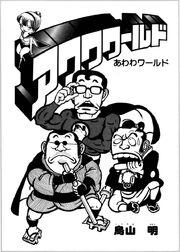
Awawa World title page
- Awawa World (あわわワールド) – Story from 1977 never published in magazines, in which two Samurai in feudal Japan meet a Superman-like character. This story was released in two parts through the Bird Land Press # 4 (May 1983) ~ 5 (March 1983), several years later. A few pages are exposed in the Akira Toriyama Exhibition catalogues.
- Mysterious Rain Jack – Story from 1978 never published in magazines, but made public in Bird Land Press # 3 (October 1982) ~ 4 (January 1983). It is a Star Wars parody with a main character who looks like Kurikinton Soramame. It marks the first appearances of Thunder Ogre Goronbo, Drop-kun, and R2-D2 in one of Toriyama's manga (they later appear in Dr. Slump). A few pages are exposed in the Akira Toriyama Exhibition catalogues.
- Wonder Island – Two part manga released in 1978-1979 in Weekly Shōnen Jump, notable for being Toriyama's first published manga. Wonder Island marks the debuts P-Man, who makes appearances in Dr. Slump, as well as Gyaosu, Gala and Pagos who later become recurring characters in Dr. Slump.
- Today's Highlight Island – One-shot first published on April 20, 1979 in Weekly Shōnen Jump. The main characters, Kanta and Dr. Goat, have brief appearances in Dr. Slump. The story is that of a greedy junior high school student, Kanta, who can not eat because of a toothache. He sees a dentist, the incompetent Dr. Goat, who uses Kanta in funny experiments that make him suffer from his toothache more than before.
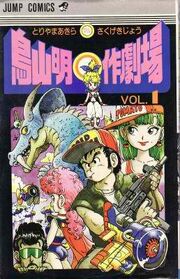
Akira Toriyama's Manga Theater collection
- Tomato, Girl Detective – One-shot published on August 15, 1979 in Weekly Shōnen Jump, made from a solicitation of Kazuhiko Torishima, who wanted a story with a heroine. Notable for being the debut of Sourman, although he only appears in his secret identity Kenta Kuraaku. The main characters Akai Tomato and Slump make brief cameo in Dr. Slump chapter 5, and Akai Tomato appears in Dragon Ball episode 44. Also, the Police Commissioner in this manga looks like the Penguin Village Junior High Principal.
- Dr. Slump – The first major series created by Toriyama that ran from January 1980 to August 1984 in the pages of the Weekly Shōnen Jump, spawning 18 volumes. The characters and setting appear in Dragon Ball.
- Pola & Roid – One-shot released in March 1981 in Weekly Shōnen Jump #17. Made for a contest after Toriyama was named in the top 10 manga artists of Shōnen Jump for the first time. He was voted first and he won a trip to Switzerland. King Nikochan and his assistant make cameo appearances.
- Escape – One-shot first published in January 1982 in Weekly Shōnen Jump. The female protagonist and the anthropomorphic character from this manga appear in the Dragon Ball episode "Prelude to Vengeance".

Mad Matic title page
- Mad Matic (マッド マチック) – One-shot released in February 1982 in Weekly Shōnen Jump #12, and also featured in Akira Toriyama's Manga Theater Vol. 1. Made after Toriyama was named again in the top 10 manga artists of Shōnen Jump. Toriyama wrote it with the help his assistant. The hero and his flying dog travel in car in an arid region, both completely thirsty. They are attacked by the evil Gun-Gun, and later captured by two girls named Nivea and Muhi. While the dog wanders unsteadily, he disconnects the outlet of a giant refrigerator filled with alcohol and in which a huge dragon who used to terrorize the region was sealed. The boy sympathizes with the dragon, as both like alcohol, and allies with the girls to face, with the dragon's help, Gun-Gun and his air fleet.
- Pink – One-shot first published in October 1982 in Fresh Jump. It was adapted into an anime movie titled Pink - Water Bandit, Rain Bandit and released on July 7, 1990. In a vast desertic region, lives a young girl named Pink. She makes a living as a mysterious bandit stealing water from the Silver Company, a shady company that has appropriated all the water.
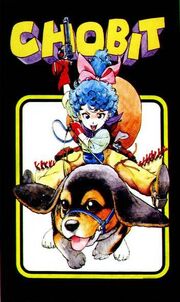
Chobit 2 title page
- Chobit (チョビット) – Two part manga published in Weekly Shōnen Jump #10 in February 1983 for the first part and in Fresh Jump in April 1983 for the second part. It is also featured in Akira Toriyama's Manga Theater Vol. 1. This manga was made after Toriyama was once again named in the top 10 manga artists of Shōnen Jump. Since his parents died knocked down by a mad bull, Mugifume Yamano, 21, is the only policeman in Ton-Ton village. He is assisted in his task by his younger sister and brother, Takenoko (4 years old) and Kurimaru (1 and a half). Mugifume moves by bicycle and, unfortunately, he is very naive, clumsy, and extremely stupid. One day, he meets the tiny Chii, a humanoid alien girl who came form planet Micron in a flying teapot. Chii has magical powers that will allow Mugifumie solve the problems in town more easily. In the second part, after Ton-Ton village became peaceful, Mugifumie is called to the western-style Tan Tan Town. The police there consists of only one member, Mary, the pretty daughter of the mayor. With Chobit's help, Mugifumie will have to stop a dangerous bandit called Mack The Shooter.
- Dragon Boy – Two part manga released in 1983 in Fresh Jump. Notable for being the prototype of the Dragon Ball manga.
- The Adventures of Tongpoo – Two part manga released in November 1983 in Weekly Shōnen Jump #52. Notable for having served as an inspiration for Dragon Ball, introducing an early concept for the Capsule, as well as story elements for Dragon Ball chapter 2.
- Akira Toriyama's Manga Theater (鳥山明○作劇場) – Three volumes that are compilation of many one-shots by Toriyama, originally released in 1983, 1988, and 1997 respectively. The first volume features Wonder Island, Tomato, Pola & Roid, Mad Matic, and Chobit. The second volume features Today's Highlight Island, Escape, Pink, Dragon Boy, The Adventures of Tongpoo, Mister Hō, Kennosuke-sama, and Sonchoh. The third volume features Mamejiro, Karamaru, Cashman, Dub & Peter 1, and Go! Go! Ackman. Lady Red and Alien X-Peke were added in the 2008 Akira Toriyama Mankan Zenseki version.

Toriyama's most popular characters, Goku and Arale (2011)
- Dragon Ball – The most well known series by Toriyama that started in 1984 and went all the way to 1995 spawning 42 volumes.
- Hetappi Manga Kenkyūjo – One-shot by Akira Toriyama and Akira Sakuma, published from October 1982 to March 1984 in Fresh Jump, and made into one volume released in May 1985. Toriyama, as the Tori-Bot, explains to his young assistant Hetappi, as well as the readers, how to create a manga.
- Mister Hō (Mr.ホー) – One-shot released in November 1986 in Weekly Shōnen Jump #49, and also featured in Akira Toriyama's Manga Theater Vol. 2. The manga takes place in a world similar to that of Dragon Ball, and the main character looks exactly like Yamcha. In a land where the war between North and South raged in the past, Mr. Hō, 24, visits the South and falls in love with an ostrich breeder who does not like him because he is from the North. Mr. Hō decides to help her little brother Chazke defend against the Chai gang, former soldiers form the North who continue to persecute the people of the region. When they kidnap Chazke's sister, Mr. Hō attacks the gang's base and defeats the entire army (8 men), revealing that he was part of the legendary Unit 223 from the North, the Black Beret squad. Now that he has saved her, Chazke's sister likes Mr. Hō. The story ends with the two driving off in Mr. Hō's car.
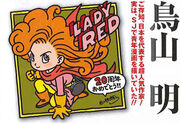
Lady Red
- Lady Red (レディー・レッド) – Four page gag manga considered erotic, released on April 10, 1987 in Super Jump #2, also featured in Akira Toriyama Mankan Zenseki Vol. 1. Lady Red is an inept female crime fighter who discovers that prostitution pays better money.
- Kennosuke-sama (剣之介さま) – One-shot released in August 1987 in Weekly Shōnen Jump #38, and also featured in Akira Toriyama's Manga Theater Vol. 2. It was adapted into an anime movie released on July 7, 1990. Kennosuke is a 5–6 years-old samurai very well mannered and very serious. He has a date with a girl named Miss Oden. Not knowing the good practice in a date, Kennosuke seeks advice from his mother and his best friend Shinobimaru, with discretion, so that no one realizes it is his first time. After a visit to the seaside and time passed in a small cafe, Kennosuke gets the opportunity to demonstrate his ability in combat when a gang tries to steal his money.
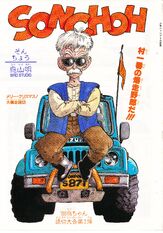
Sonchoh title page
- Sonchoh (そんちょう) – One-shot released in January 1988 in Weekly Shōnen Jump #05, and also featured in Akira Toriyama's Manga Theater Vol. 2. Tetsunoshin Kataiwa is a cool old man who is the mayor of Pon Pon village, a small village in the countryside by the sea. He protects his village using his Suzuki Jimny, a vehicle he nicknamed "Pochi". One day, he tracks a man because he passed through the village and threw a juice can out his car. Unknown to Tetsunoshin, the man is actually a dangerous gangster who will try to destroy the largest power plant in the country with the help of his accomplice, in an attempt destroy the whole land. Thanks to his car which has the ability to fly and fire rockets, the mayor stops the criminal and saves the land. The Suzuki Jimny is also featured on the cover of the Dragon Ball chapter "Guess Who's Back?"
- Mamejiro (豆次郎くん) – One-shot released in August 1988 in Weekly Shōnen Jump #38, and also featured in Akira Toriyama's Manga Theater Vol. 3. The plot is similar to that of the Dr. Slump chapter "Kinoko on the Loose". Mamejiro is a 6-years-old boy who lives in the countryside. He is very strong and courageous, due to helping his parents in agricultural work. After his father, a former professional wrestler, ate his ice cream, Mamejiro decides to become a delinquent. For his first felony, with the help of his best friend Joji, he decides to steal the money of a man who happens to be the burglar who attacked the neighboring agricultural cooperative. For helping the police intercept the man, Mamejiro is rewarded with a mountain of ice cream.
- Clear Skies, Karamaru (空丸くん日本晴れ) – One-shot released in February 1989 in Weekly Shōnen Jump #13, and also featured in Akira Toriyama's Manga Theater Vol. 3. It is a kind of modern Little Red Riding Hood. In year 9 of the Hanpeï era, Karamaru-kun, a four-year-old ninja, has to bring mushrooms in town and sell them to buy medicins and cigarettes for his sick grandfather. On the way, he meets a car stealer who thinks he is ninja as well. The car stealer helps Karamaru to stop a gang of three ninja thieves who took his mushrooms (they do not steal the car because none of them has a driving license). In the end, convinced that he must be a good example to the young boy, the car stealer brings the car to the police and offers Karamaru to become his disciple. Karamaru is very similar to Kennosuke, and the car stealer is very similar to Ninja Murasaki.
- Rocky – One-shot released in July 1989, in the book Dōjinshi Neko Jū Jisha to Sono Yūjin-tachi. It is a Dr. Slump spin-off. The main protagonist, Rocky, drives a race car, committing speeding in series. At one point, he meets Arale Norimaki.
- Wolf – One-shot published on January 15, 1990, in the pages of the artbook Akira Toriyama - The World. It is a kind of modern Little Red Riding Hood where the wolf spends his time making trips on a motorcycle.
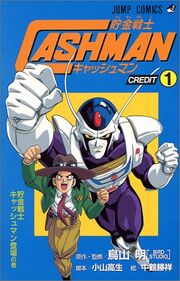
Cashman - Saving Soldier
- Cashman - Saving Soldier (貯金戦士CASHMAN) – Three part manga published between December 1990 and 1991 in V-Jump, and also featured in Akira Toriyama's Manga Theater Vol. 3. The main protagonist looks like members of Frieza's race, as Cashman was published during the same period as the Frieza Saga. Jiora is a policeman from the planet Biretijon. One day, his ship crashes on Earth while he was pursuing dangerous criminals in space. He repairs his ship but, short of fuel, he has to take the appearance of the man he accidentally killed when he arrived on Earth, Chapat, a lazy and coward policeman from Slope Town. To raise the sum of 17 million yen needed to buy fuel for his ship, which is gold, Jiora fights crime for money as Cashman, resuming his extraterrestrial appearance. In the first chapter, Cashman saves an old man and his daughter threatened by a truant, and then confronts the interstellar gangsters he was pursuing before his arrival on Earth. In the second chapter, he saves Chapat's girlfriend from the clutches of a gang called the Devil Kids. In the third chapter, he snatches a briefcase containing a billion yen from a professional thief called Albert Dupont.
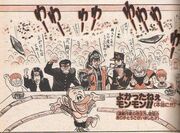
Super Saiyan Goku in Monmon no Sumō Yūgi
- Monmon no Sumō Yūgi * (モンモンの相撲遊戯) – One-shot crossover by Tsuno Maru, published in 1992 in the Weekly Shōnen Jump. This special manga is about a sumo competition in which the main Weekly Shōnen Jump heroes participate, including Goku from Dragon Ball, Jotaro Kujo from JoJo's Bizarre Adventure, Ai Amano from Video Girl Ai, and Monmon from Mon Mon Mon!
- Dub & Peter 1 – Four part manga released in 1992-1993. It takes place in Pepper Town and marks the debut of Rock, who later appear in filler in Dragon Ball Z. Also, the main characters Dub and Peter make a cameo in the spin-off manga Dragon Ball Heroes: Victory Mission.
- Go! Go! Ackman – 11 part manga published in V-Jump from July 1993 to October 1994, and also featured in Akira Toriyama's Manga Theater Vol. 3. A 200-year-old demon child named Ackman wakes up after a fifty-year nap, and begins to kill people in order to sell their souls and earn money from the Dark Lord (like Chivil from Dr. Slump). His main nemesis, the Cherub type angel Tenshi, tries to stop and kill him, but always fails miserably; one example is Tenshi tries to hit Ackman with a missile, but misses and hits a school bus full of children instead. Ackman was adapted into a 15-minute film by Takahiro Imamura, and it has four video game adaptations (three for Super Famicom and one for GameBoy).
- Dr. Slump Returns, But Only For a Little While * – Four volume sequel to Dr. Slump that was made by Takao Koyama and Katsuyoshi Nakatsuru, and that ran from 1994-1996.

Alien X-Peke title page
- Alien X-Peke (宇宙人ペケ) – Two part manga released in August 1996 in Weekly Shōnen Jump #37-38 and 39, and also featured in Akira Toriyama Mankan Zenseki Vol. 2. It marks Toriyama's return to Jump after his yearlong post-Dragon Ball hiatus, and is the last manga drawn by Toriyama which was shaded by hand rather than computer. Peke is a scout from planet Hanamaru. When he finds Earth, seeing that its resources are first-rate and the inhabitants are so primitive that he can easily wipe them out alone, he is so happy that he slips from the top of his spaceship and falls down to Earth. He spends the next few months traveling around looking for where his spaceship crashed, and he does various jobs to get by, like delivering things on bike and offering "pleasure" to a woman. Peke is then hired by a boy to take out some thugs whose leader is a corrupt police chief and who are trying to force him, his sister (the woman Peke encountered earlier), and their grandfather off their land. The alien confronts some of the thugs, trying to shot them, but he is an incredibly awful shot. He then simply beats them up with his bare hands. Learning of his thugs' defeat, the police chief gathers a large group of men to attack. Meanwhile, Peke learns that the boy has discovered his spaceship out in the mountains when he tells his grandfather that he had spent the night sleeping in a weird airplane. Peke reveals to the family that he intends to conquer the Earth and he offers to spare them if they tell him the exact location of his ship. As they refuse, Peke storms off to find it himself. The second wave of thugs attack soon after, so the grandfather tells the boy to go get the alien and promise to tell him the spaceship's location in return for taking care of the thugs. The grandfather heads off to destroy the spaceship with dynamite to protect the Earth while the alien defeats all the thugs. When Peke says that he will return to his planet and keep the Earth's existence to himself, they hear an explosion in the distance as the grandfather blows up Peke's spaceship.

Tokimecha title page
- Tokimecha (トキメカ) – Three part manga published from December 1996 to January 1997 in Weekly Shōnen Jump #3/4, 5/6 and 7. Tai is a teenage girl who creates a Time Machine and goes to prehistoric times, where she meets a very strong boy. Together, they confront dinosaurs and other enemies.

Bubul & the magical village
- Bubul & the magical village (魔神村のBUBUL) – One-shot released in April 1997 in Weekly Shōnen Jump #22/23, and which was voted first by the readers. Bubul is a young monster who lives in a dimension inhabited by other magic beings and monsters (majins). One day, he meets Patchi, a thief who came from Earth to Bubul's world.
- Cowa! (こわ!) – One volume series that started in October 1997 in Weekly Shōnen Jump and ended in 1998. Cowa! was Toriyama's first long project since the end of Dragon Ball. Paifu, a young half-vampire and half-werekoala, is always getting trouble. He is always with his buddy, the teal ghost Jose Rodriguez (who looks similar to Bubul). One day, when the monster flu hits their town, it is up to them to save the adults.
- New Cashman - Saving Soldier * – One volume sequel to Cashman - Saving Soldier, published between May 1997 and 1998 in V-Jump (starting with V-Jump #6). Made by Takao Koyama and Katsuyoshi Nakatsuru, and supervised by Akira Toriyama.
- Kajika – One volume series that originally ran in Weekly Shōnen Jump in 1998-1999, and released into a single volume on January 8, 1999. Kajika is the story of title protagonist and his quest to return to being a normal boy. The hero Kajika has to save lives of 1000 animals to cancel the fate he caught killing a fox, which had metamorphosed him into a fox-man. The protagonists in this manga are all named after fish.

Haigyo no Mahimahi
- Haigyo no Mahimahi (ハイギョのマヒマヒ) – One-shot released in January 1999 in Weekly Shōnen Jump #4/5. It follows the underwater adventures of a small triton called Sui-Sui. He meets and discuss with several fish of different species, notably an eel called Mahimahi. At the end of the story, Toriyama tells us about the different eel species around the world.
- Nekomajin – A gag manga that originally ran from 1999-2004 in Weekly Shōnen Jump, and which was made into one volume in 2005. Characters from the Dragon Ball series make appearances.

Hyowtam
- Hyowtam (ヒョータム) – One-shot released in January 2000 in E-Jump, and which is the first manga Toriyama entirely made using a computer. This height page manga is about a being from above the clouds who comes to Earth, seeking for an egg that he dropped. He searches the mysterious egg using vehicles called Tama-Tama, and asks the animals of the region for help. A purple pig finds it, and Hyowtam reveals that the egg is in fact his lunch. He grants a wish to the pig, but then a hunter attacks the pig. Hyowtam saves the pig's life and uses his magic powers to reduce the hunter's size so that he is now hunted by insects. As the pig's wish was to fly, Hyowtam gives him his flying helmet and then returns to the sky.
- Sand Land – One volume series that originally ran in the Weekly Shōnen Jump during the summer of 2000, and which was a huge success in Japan. Toriyama depicts an arid world similar to that of Pink, where live characters such as Beelzebub the prince of demons, a wise demon called Thief, and sheriff Rao a former soldier of the royal army. The Dragon Ball character Dabura makes a cameo.
- Bitch's Life * (ビッチズ・ライフイラストレーションファイル) – Akira Toriyama made one illustration for this 2001 art book.
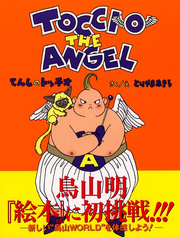
Toccio the Angel
- Toccio the Angel (てんしのトッチオ) – Book that targets young children, released by Shueisha on January 24, 2003. The format is larger for easier reading, and in full color. The story is similar to that of Hyowtam, with a few changes. Toccio, a lovable and grumpy guardian angel who heavily resembles the fat Majin Buu, loves to play, but hates to study. The Big Boss gets tired of his antics, and commands him to help people out or he will lose his place in Heaven. Eventually sent on Earth, Toccio becomes a protector for animals and helps them thanks to his magic abilities.
- KochiKame * – A one-shot crossover chapter between Akira Toriyama's Dragon Ball and Osamu Akimoto's KochiKame series was released in September 2006.
- Cross Epoch – One-shot crossover between Akira Toriyama's Dragon Ball and Eiichiro Oda's One Piece series, released in 2006.
- Dr. Mashirito and Abale-chan – One-shot spin-off about Dr. Mashirito Jr., the son of the Dr. Slump's antagonist Dr. Mashirito, published in Weekly Shōnen Jump in January 2007.
- Sachie-chan Guu!! (さちえちゃんグー!!) – One-shot by Akira Toriyama and Masakazu Katsura published in May 2008 in Jump Square, and released in a collected volume with Jiya on April 4, 2014. It is part of Akira Toriyama's "Galactic Patrol series", along with Jiya and Jaco the Galactic Patrolman.[14] Sachie is a girl hung up by a birthmark on her buttock, and whose strength increases on some occasions. One day, she meets an alien race that want the help of her father, the famous ninja Momochi XX, to take out the tyrannous Mils from planet Octo. Sachie decides to help the aliens instead of her father in exchange to get rid of her birthmark.
- Oishii Shima no Ū-sama – Two part manga made for a brochure in 2030 Magazine Saishū Senryaku Biosphere to introduce children to environmentalist issues. It follows two men from the city who decide to protect a pristine island from Tech-Tech aliens looking to exploit its natural resources. The Tech-Tech aliens previously appeared in Nekomajin, Toccio the Angel, and Dr. Mashirito and Abale-chan, the main characters look similar to the Wombat and Biker from Nekomajin, and Ū-sama himself looks like a Neko Majin.
- Jiya (JIYA -ジヤ-) – Three part one-shot by Akira Toriyama and Masakazu Katsura that ran from December 2009 to January 2010 in the Weekly Shōnen Jump, and released in a collected volume with Sachi-chan Gū!! on April 4, 2014. It is part of Akira Toriyama's "Galactic Patrol series", along with Sachi-chan Gū!! and Jaco the Galactic Patrolman.[14] Jiya is an alien and a galaxy patrol member on a mission to Earth. His first encounter with human kind is rescuing the rich party girl Kaede and her chauffeur Kyuumonji Yukio from mountain bandits. Using the chauffeur's body as a host, Jiya is going to check out rumors of a recent infestation of "vampires" that are attacking beautiful young women on Earth.
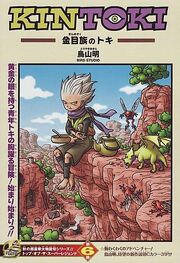
Kintoki title page
- Kintoki (KINTOKI-金目族のトキ) – One-shot released on November 15, 2010 in Weekly Shōnen Jump #50, and made as part of a series of one-shots by the most famous Shōnen Jump authors. This 30 page manga was released in the U.S. in the Viz Media digital Weekly Shonen Jump on January 28, 2013. The story focuses on a hunter named Toki who is part of an endangered race of warriors who all have golden eyes and a short lifespan, the Golden-Eyed tribe. He is naïve, very strong, and earns money selling Thundra that he hunts. One day, Toki meets a girl named Merlusa who works as a fortuneteller, claiming she comes from Venus. She helps him to get more money from the Thundra he is selling, getting him 400 zeni from it instead of 35 zeni before asking him half the money. Toki later saves her from Berry, a rich boy who wants to marry her. The name of each of Berry's men forms a word when "berry" is added at the end: Cran[berry] the swordsman, Rasp[berry] the sniper, Huckle[berry] the big man, and China[berry] of the Golden-Eyed Tribe. Toki defeats Cran, and then fights with the 38-year old China. After the brief battle, China decides to leave Berry and reveals that 5 or 6 members of the Golden-Eyed tribe live in a land in the East. Berry threatens Merlusa with his gun, but then a Thundra kidnaps him. Toki saves Berry from the Thundra using Rasp's gun and, while Rasp runs to help his master, Toki leaves with Merlusa, Huckle, and the injured Cran to find a doctor and then find the remaining members of the Golden-Eyed tribe. This 30 page manga was released in the U.S. in the Viz Media digital Weekly Shonen Jump on January 28, 2013.
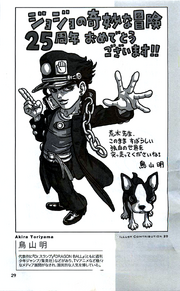
Akira Toriyama's contribution to 25 Years With JoJo
- 25 Years With JoJo* (25 YEARS WITH JOJO 25周年記念BOOK) - A booklet issued on Shueisha's Ultra Jump magazine on September 19, 2012, celebrating the 25th anniversary of Hirohiko Araki's JoJo's Bizarre Adventure. The booklet featured 22 other manga artists, including Akira Toriyama, contributing to tribute art. Toriyama was the 20th illustrator, and for his part he drew the characters Jotaro Kujo and Iggy.
- Jaco the Galactic Patrolman – One volume series which debuted on July 13, 2013 in the Japanese Weekly Shōnen Jump #33 and on July 15, 2013 in the North American version. It is part of Akira Toriyama's "Galactic Patrol series", along with Sachi-chan Gū!! and Jiya.[14] This manga follows the story of a powerful Galactic Patrolman named Jaco, who is stranded on Earth. Bulma's older sister Tights is one of the main protagonists, and characters from Toriyama's other manga make cameo appearances (such as a Martian, a Namekian, a Tech-Tech alien, Merlusa from Kintoki, Daigoro Kurigashira, Goku, Grandpa Gohan, and the Brief family).
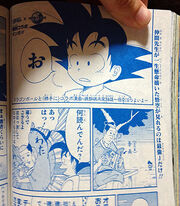
The Tale of Isobe Isobei crossover with Dragon Ball
- The Tale of Isobe Isobei: It is Tough Being in the Floating World * – A special Dragon Ball crossover with The Tale of Isobe Isobei was published in the 2014 Saikyō Jump #7, penned by its author Ryō Nakama. A young Goku encounters the titular Isobei, who is reading a book of shunga (erotic ukiyo-e prints). Goku asks what he is reading, then introduces himself as Goku. However, Goku misunderstands the archaic language in Isobei's own self-introduction and starts calling the samurai "Desōrō" (De sōrou is an old-fashioned copula which takes the place of desu or de gozaru for samurai). As Isobei continues to try to explain to Goku who he is, he mentions that he could fell the tree behind him in a single stroke, so Goku attempts the same using his fist, doing so easily. As Isobei feigns drowsiness in order to avoid having to show off his own strength, Master Roshi shows up and takes the book of dirty pictures while Goku waves goodbye to "Desōrō".
-
- Indicates that, although the story was not directly written by him, Akira Toriyama was still involved with the project.
Movies
- Crusher Joe * – Animated film released in March 1983, for which Toriyama was a designer.
- Apple Pop * – Puppet theater film released in April 1988, for which Toriyama designed the characters. It features a family of wolves, a dragon, and a big yellow duck monster who is a magician. Some illustrations for this show were published in Akira Toriyama - The World.

Toriyama's Pink, Dragon Ball, Kosuke & Rikimaru, and Kennosuke-sama characters
- Kosuke & Rikimaru - The Dragon of Konpei Island (小助さま力丸さま-コンペイ島の竜-, Kosuke-sama Rikimaru-sama - Konpeitō no Ryū) – 60 minute movie that is the first animated film produced by Akira Toriyama, released in September 1988. Tanukikouji Sakurako is a professor from Tokyo who is specialized in the study of dragons. She travels to the Konpei island in order to study a new specimen. General Yamada and his army are also looking for the dragon, but it is to steal a precious stone that the animal carries on his forehead. Kosuke and Rikimaru are two young samurai apprentice and the guardians of the island.
- Pink - Water Bandit, Rain Bandit – 30 minute anime adaptation of Toriyama's 1982 manga Pink, released on July 7, 1990. Some of the established characters were revamped. First shown at the Toei Anime Fair, as part of a triple feature with Kennosuke-sama and Dragon Ball Z: The Tree of Might. The film was distributed on video in May 1994, as a double feature along with Kennosuke-sama.
- Kennosuke-sama (剣之介さま) – 20 minute anime adaptation of Toriyama's 1987 manga, released on July 7, 1990. First shown at the Toei Anime Fair, as part of a triple feature with Pink - Water Bandit, Rain Bandit and Dragon Ball Z: The Tree of Might. The film was distributed on video in May 1994, as a double feature with Pink - Water Bandit, Rain Bandit.
- * Indicates that, although the story was not directly written by him, Akira Toriyama was still involved with the project.
Game design
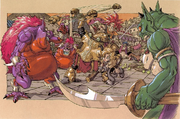
Chrono Trigger art
- Dragon Quest (Enix, May 1986)
- Dragon Quest II (Enix, January 1987)
- Dragon Quest III (Enix, February 1988)
- Dragon Quest IV (Enix, February 1990)
- Dragon Quest V (Enix, September 1992)
- Torneko No Daibōken: Fushigi No Dungeon (Chunsoft, September 1993)
- Chrono Trigger (Squaresoft, March 1995)
- Dragon Quest VI (Enix, December 1995)
- Tobal No. 1 (Squaresoft, August 1996)
- Tobal 2 (Squaresoft, April 1997)

Dragon Quest art
- Dragon Quest Monsters (Enix, 1998)
- Torneko: The Last Hope (Enix, September 1999)
- Dragon Quest VII: Warriors of Eden (Enix, August 2000)
- Dragon Quest Monsters 2 (Enix, 2001)
- Torneko no Daibōken 3 (Enix, October 2002)
- Dragon Quest Monsters: Caravan Heart (Enix, 2003)
- Slime MoriMori Dragon Quest (Square Enix, 2003)
- Kenshin Dragon Quest (Square Enix, 2003)
- Dragon Quest VIII (Square Enix, November 2004)
- Dragon Quest Heroes: Rocket Slime (Square Enix, December 2005)
- Dragon Quest: Shōnen Yangus to Fushigi no Dungeon (Square Enix, April 2006)
- Blue Dragon (Microsoft Studios, December 2006)
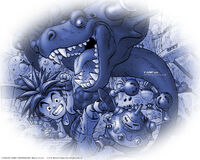
Blue Dragon art
- Dragon Quest Monsters: Joker (Square Enix, December 2006)
- Dragon Quest Swords: The Masked Queen and the Tower of Mirrors (Square Enix, July 2007)
- Dragon Quest IX (Square Enix, July 2009)
- Dragon Quest Monsters: Joker 2 (Square Enix, April 2010)
- Slime MoriMori Dragon Quest 3 (Square Enix, November 2011)
- Dragon Quest X (Square Enix, August 2012)
- Dragon Quest XI (Square Enix, July 2017)
Object design
- LISA (scale model, 1986)
- Scout Mobile Tongpoo (scale model, 1987)
- World Fighter Collection (scale models, 1992–1994)
- QVOLT (electric car, 2005)
Quotes
"Dragon Quest is dangerous! It got to the point where I could not get any work done, so my wife finally took it away."
— Chapter 79 comment, Weekly Shōnen Jump, 1986
"Dragon Quest II on the Famicom is too fun! Now I can not get any work done!"
— Chapter 108 comment, Weekly Shōnen Jump, 1987
"I have finally finished drawing all the monsters for Dragon Quest III. The game looks really fun!"
— Chapter 141 comment, Weekly Shōnen Jump, 1987
"Dragon Ball, which I planned on lasting one year when I started, has now been in serialization so long that it has surpassed Dr. Slump! I feel both happy and scared..."
— Chapter 249 comment, Weekly Shōnen Jump, 1989
"In this volume of the manga, Son Goku died. I think it is best to not get too attached to the characters that I draw, but even I think it is kinda sad to see the death of a protagonist who I have continued to draw for almost 10 years. I thought of other ways too, but ultimately thought that having him die was best after all. For the time being, I have taken care to not get too dark, but still, I'm sorry Son Goku-kun, please forgive me."
— Volume 35's introduction, 1993
"I truly thank you for faithfully reading Dragon Ball for so terribly long. I am very grateful for how you all supported me up until the very end. The truth is that I decided on this a long time ago but a lot happened, so please forgive me for announcing this so suddenly. For this new step in my life, I have asked a big favor of everyone concerned and I am ending this manga. Of course, I humbly apologize to all you fans too. I am very sorry. From now on, I think I will take a little break, and then leisurely draw one-shot works. You will definitely see me again. I think it (should) certainly be interesting, so look forward to it! Well, until that day, this is goodbye. Let's meet again."
— May 1995 (Weekly Shōnen Jump, June 5, 1995)
"Up until the World Martial Arts Tournament began, the series had not been all that popular. At the time, Torishima-san told me "your protagonist is rather plain. That is why it is not popular". Personally, since I was doing a fighting story for this series, I had intentionally made the protagonist's clothing excessively plain. So this annoyed me, but then I figured it out. "Well, let's increase its popularity" I thought. When I had designed Goku's character, the words that best represented him were "I want to become strong". So I thought I'd bring that to the front. Even during Dr. Slump, mini-events and tournament-like things such as the Penguin Village Gran Prix had been amazingly popular. So I'd simply make the story into a tournament format. From there, the World Martial Arts Tournament was born. I temporarily withdrew the other characters besides Goku, brought back Master Roshi, and added Krillin as a new character. From there it got popular before I knew it."
— Daizenshuu 2, 1995
"At that time, it began to be more fun to think up the story than to draw the pictures. But with the story, I basically only thought of each chapter. That is why I end up getting caught in these quagmires. (laughs) Around the time of Trunks' time travel, it was dreadful. I kept drawing, and it just got more and more incoherent."
— Daizenshuu 2, 1995
"Right around then was when the Androids No. 19 and No. 20 appeared. You weren't my editor or anything anymore, but you specifically called me to say "I thought that the enemies had finally come, but aren't these just a geezer and a fatso?" (laughs) In truth, I hadn't had plans for anyone but No. 19 and No. 20 to appear. But there was no helping it, so I brought out No. 17 and No. 18. Then you called me up and said "What, this time it is just some brats?" So I brought out Cell."
— Daizenshuu 2, 1995
"With second-form Cell as well, I liked him well enough. Actually, I had wanted him to play a more active role. But since I was told he looked stupid, I had no choice but to change him. (laughs) So I made him into his cool-looking perfect form, which was to Kondō-san's liking."
— Daizenshuu 2, 1995
"I intended to put Gohan into the leading role. It did not work out. I felt that compared to Goku, he was ultimately not suited for the part."
— Daizenshuu 2, 1995
"Of course, I didn't think that at all (laughs). The Saiyans were like that as well. When I thought up Goku's tail and the Great Ape, I did not think Goku was an alien or anything. Piccolo either. Because I thought that up when Kami came out."
— Daizenshuu 4, 1995
"This Daizenshuu, the 7th and final one, is a huge Dragon Ball encyclopedia. I think the staff who make these books always have a rough time of it, but this one looked even more hellish than usual. They really did a great job. I am ridiculously forgetful, so despite being the author there is lots of stuff even I do not know anymore. It was often quite a nuisance, and I think having this encyclopedia around when the series was still running would have really helped me out. Darn it all. Anyway, my thanks to the staff, and to all Dragon Ball fan."
— Daizenshuu 7, 1996
"Haha, that's great... Wait, did I write that?"
— Interview with TV journalist Tadaima Ittekurunda, 1997
"Ooishi-san understands Dragon Ball really well, and she knows so much about it too. I've plump forgot what in Dragon Ball, so she knows about 1,000 times more about it than me! But what I admire more is her considerable artistic strength and skill at manga composition, so I'm confident that she has made a work that is even more interesting then the original anime, which was abit weak (?) in some areas. She did her best in the unfamiliar job of making manga out of an anime, all because it as too much of a pain for me to make an original work myself. So please be nice and support her. I think that I probably would not draw any more Dragon Ball manga, so this is the only place you are going to see anything new!!"
— Yo! Son Goku and His Friends Return!! manga, 2009
"It has apparently been 17 years since the last Dragon Ball animated movie! For all the animation up to now, I have basically jut left everything up [to the staff], so this is my first try at being involved, starting from the story's creation. The key words this time, "God of Destruction Beerus" and "Super Saiyan God", were suggestions from the scriptwriter, but they were good ideas for presenting a crisis for the main characters, who had grown so strong that they had reached a point where there was nothing higher. After first deciding on Beerus' character design and background, I tried thinking up an original story imagining it is if the serialization had continued. What is more, the God of Destruction Beerus, who this time I designed with rare freedom, is a terrifying opponent so overwhelmingly strong that he surpasses the dimension of previous opponents. But it is my trademark to not let things get too dark. At the very least, I am satisfied that it has been finished up as a very entertaining piece of work.
By the way, the battle scenes in the second half are particularly overwhelming! It came out so much better than I imagined that I was moved. Just as expected, Japan's animation is superb! Everyone on the staff really did a great job!! Well, please enjoy the first Dragon Ball in a long time!"
— About his involvement with Dragon Ball Z: Battle of Gods, film pamphlet, February 2013
"It began two years ago. The ideas "God of Destruction" and "Super Saiyan God" were there from the start, but the worldview was pretty dark. So correcting this into a more DB-esque content kids could enjoy too was the catalyst for me becoming heavily involved in the story."
— "Super Long Interview!! Please Tell Us, Akira Toriyama-sensei!!", Weekly Shōnen Jump #14, 2013
"I think this may be the last manga that I create completely by myself because I just don't have the stamina anymore. And that's why I decided I'd just do whatever I wanted to. Unfortunately, this series won't have much flashy action like Dragon Ball did. But that doesn't mean it will have a beautifully deep plot either. Light, goofy, and happy! That's what my manga is all about. Some parts might only make sense to Japanese people, and even they might not get some of the old jokes. But if you can read all 217 pages through to the end, I think you'll be a little surprised and will understand the nostalgia I've put into the work. And it would please me greatly if it brings you even a little bit of happiness"
— Jaco the Galactic Patrolman, 2013
Trivia
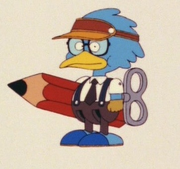
Toriyama as a bird in Dr. Slump
- Akira Toriyama created a character based off himself called Tori-Bot that makes few appearances in Dr. Slump, the early parts of the Dragon Ball manga, in the Dragon Ball Z TV series and movies, and in Dragon Ball GT. Before using the Tori-Bot, Toriyama drew himself as an anthropomorphic bird called Tori (as tori means "bird" in Japanese).
- Akira Toriyama himself is included in the character dictionary in Daizenshuu 7. He is described as the ultimate ruler of the Dragon Ball universe and a gentleman far, far greater than even the Supreme Kais.
- He has stated that his favorite characters in the Dragon Ball series were Tien Shinhan and Future Trunks, as well as Krillin[15] and Mr. Satan.[15] [16] Akira Toriyama also said that he liked King Piccolo/Piccolo and Goku about the same.[16] He also said that Goku was his favorite character in an interview with Shonen Jump in 1995.[17] He stated that Super Janemba was his favorite of the original thirteen movie villains, and that his favorite Dragon Ball movie/special was Dragon Ball Z: Bardock - The Father of Goku - and that it was the kind of story he "absolutely wouldn't draw".[18] Toriyama said that Jaco is his "number-one favorite story and protagonist out of anything (he's) done in the past"[19]
- In an interview conducted in 2007 with Shōnen Jump, Akira Toriyama revealed that he does not consider what is to occur in proceeding chapters of his stories.
- He stated in an interview that he prefers telling stories in open natural places and at daylight because buildings and night take longer time to draw, especially in the serialization of Dragon Ball where the deadlines were very strict.
Gallery
Photos
| Akira Toriyama draws (Anniversary of Araki Hirohiko, 1980) Akira Toriyama (Anniversary of Araki Hirohiko, 1980) Akira Toriyama in 1983 (Dr. Slump volume 12) Akira Toriyama with his pet dog, Turbo Mach 2 (1983) Akira Toriyama working (1983) Akira Toriyama's wife and nephews (1983) Toriyama with his wife and Jackie Chan (Bird Land Press #22) Akira Toriyama working Akira Toriyama with his pet cat, Koge (1987) Akira Toriyama Toriyama leaning on his Messerschmitt KR (Toriyama - The World, 1990) Akira Toriyama Akira Toriyama interviewed in Tetuko Akira Toriyama Akira Toriyama interviewed for V-Jump Akira Toriyama Akira Toriyama with Jackie Chan Akira Toriyama with Jackie Chan Toriyama spotlight, by Viz Media All the depictions of Toriyama in Dr. Slump Toriyama standing next to Senbei in the last Dr. Slump episode Akira Toriyama makes a cameo in a secret area in Chrono Trigger |
Cover flap images
| The bird who served as a pre-Tori-Bot alter-ego for Toriyama An animated Toriyama wearing a mask similar to that of Grandpa Gohan A disguised Toriyama with his child Toriyama's animated child, Sasuke giving the peace sign Akira Toriyama's pet cat, Koge Akira Toriyama's Siberian husky, Matoryōshiku An animated Toriyama behind his computer Toriyama as a baby Toriyama hurt from drawing images Toriyama writing a new manga page Toriyama wearing a cap with the name of his personal drawing studio Toriyama with a Tori cap unsatisfied at his own drawing Tori-Bot with a Bird Studio shirt Tori(yama)-Bot with his children, another real-life reference Tori(yama)-Bot with his real-life counterparts' possible pets Toriyama reading magazines Tori(yama)-Bot covered in books Toriyama's complexe to have gained weight over the years Tori(yama)-Bot wearing a Bird Studio cap Toriyama wearing a Goku mask Toriyama relaxing in a hot bath Toriyama's dog Matoryōshiku in Goku's gi Toriyama jumping in the air Cover Flap image of the last Dragon Ball volume |
Autographs
| Senbei Arale Gatchan and Arale Arale and Gatchan Arale Bulma Goku Goku on the Flying Nimbus Goku Goku Goku Launch Chi-Chi Goku Goku and Bulma Goku Goku Goku Goku Super Saiyan Goku Super Saiyan Goku Super Saiyan Goku Paifu and Jose Rodriguez Goku Super Saiyan Goku Super Saiyan Goku Akira Toriyama's logo Toriyama's drawing of Super Saiyan 4 Goku Toriyama talks about his longtime friendship with Katsura Toriyama's drawing of Goku (2009) Toriyama's drawing of Goku (2009) Toriyama's tribute to Naruto (Naruto 10th Anniversary Special Fanbook 2) Toriyama's message to the 2011 Japanese earthquake's victims "This is a message from Son Goku and Arale-chan. We are sending your own Spirit Bomb to the affected areas." Autograph for Maximum the Hormone Autograph for Maximum the Hormone Autograph for Maximum the Hormone Autograph for Maximum the Hormone Autograph for Maximum the Hormone Toriyama's drawing of Kid Goku (2013) Toriyama's drawing of Kid Goku (2013) Toriyama's autograph for Sakiyomi Jan Bang! Toriyama's drawing of Kid Goku (2013) Manga Theater Vol. 1 comment (April 2014) Manga Theater Vol. 2 comment (April 2014) Manga Theater Vol. 3 comment (April 2014) Cowa! comment (April 2014) Kajika comment (April 2014) Sand Land comment (April 2014) Nekomajin comment (April 2014) Toriyama's drawing of Goku (2014 Saikyō Jump #5) Gogeta for Dragon Box The Movies (2006) |
Scale models
| Fine Molds logo Logo based on the company's dog Model made from the Fine Molds logo LISA (1986) Scout Mobile Tongpoo (1987) Waffen SS with Czech ZB-26 U.S. Army soldier with Thompson M1A1 Japanese military with 38 6.5 mm rifle USSR Army woman with PPSH1941 U.S. Army woman with Colt M16A2 German army man with MG 34 Japanese military with Type 64 Assault Rifle Second Armour Modelling cover drawn by Toriyama The model Toriyama made for Armour Modelling The model at Model Hobby Show 2008 |
See also
- Akira Toriyama - The World
- Bird Studio
References
- ↑ 1.0 1.1 1.2 1.3 1.4 1.5 Dragon Ball: Adventure Special, 1987
- ↑ 2.0 2.1 Dr. Slump volume 18
- ↑ Chrono Trigger, Development Room Message, 1995
- ↑ 4.0 4.1 4.2 4.3 Dr. Slump volume 12
- ↑ Chouzenshuu 1, 2013
- ↑ Dr. Slump volume 4
- ↑ Dr. Slump volume 9
- ↑ 小学館漫画賞: 歴代受賞者, Shogakuka
- ↑ Akira Toriyama - The World "Anime Special", 1990
- ↑ Daizenshuu 6, 1995
- ↑ "The offer to direct an animated version of Blue Dragon came in February of last year (2006). Studio Pierrot approached me regarding it. I knew that Sakaguchi had been working on assembling staff to produce a game, although at the time Blue Dragon had not yet been formally announced. According to the materials, it was to be a fantasy world like Lord of the Rings, with a detailed world view and story. This may be my final anime, I'm a little worried (about it). There's incredible pressure, but at the same time, there's a sense of accomplishment, that it's worth doing. Blue Dragon will be a masterpiece, not simply because I'm working hard on it, but because the staff is expecting nothing less." Akira Toriyama in "Blue Dragon, Toriyama's Final Anime?", by Brian Ashcraft, Kotaku
- ↑ Weekly Shōnen Jump, June 5th, 1995
- ↑ "Manga and Anime industries react to earthquake crisis", Asia Pacific Arts, 2011-03-16
- ↑ 14.0 14.1 14.2 14.3 Interview with Akira Toriyama, Sachi-chan Gū!! & Jiya collected volume, April 4, 2014
- ↑ 15.0 15.1 Dragon Ball: Extreme Battle Collection volume 2, 2010
- ↑ 16.0 16.1 Daizenshuu 2, 1995
- ↑ Shonen Jump Interview c. 1995 found in Dragon Ball Z manga Complete Box Set
- ↑ Tori Daiz6 interview. kanzenshuu.
- ↑ Jump LIVE! Akira Toriyama Comments #1
External links
- Akira Toriyama's biography (Japanese)
- Akira Toriyama's biography (French)
- Akira Toriyama at IMDb
- Akira Toriyama at Short Bio
- Akira Toriyama interviewed in Tetuko
| V · T · E Dragon Ball Production Staff | |
|---|---|
| Companies | Bird Studio • Caramel Mama • Shueisha • Toei Animation |
| Author(s) | Akira Toriyama • Naho Ooishi* • Toyotarou* • Yoshitaka Nagayama* |
| Assistants | Takashi Matsuyama |
| Editors | Kazuhiko Torishima • Yū Kondō • Fuyuto Takeda • Shinichi Fukumitsu* • Daisuke Terashi* • Akio Iyoku* • Victory Uchida* |
| Directors | Minoru Okazaki • Akinori Nagaoka • Kazuhisa Takenouchi • Daisuke Nishio • Mitsuo Hashimoto • Takahiro Imamura • Shigeyasu Yamauchi • Yoshihiro Ueda • Masahiro Hosoda • Yasuhiro Nowatari |
| Producers | Keizo Shichijo • Kōzō Morishita • Kenji Shimizu • Tamio Kojima • Chiaki Imada • Rikizō Kayano • Tomio Anzai • Tsutomu Tomari • Tan Takaiwa • Seiichi Hiruta • Kōji Kaneda • Gyarmath Bogdan • James Wong |
| Production managers | Kazumi Fujioka • Matsuji Kishimoto • Take Torimoto • Akihiko Yamaguchi • Yuichi Suenaga |
| Screenwriters | Takao Koyama • Toshiki Inoue • Keiji Terui • Yoshifumi Yuki • Katsuyuki Sumisawa • Hiroshi Toda • Aya Matsui • Atsushi Maekawa • Yūsuke Watanabe • Ben Ramsey • Akira Toriyama |
| Art directors | Mitsuo Shindō • Yoshiyuki Yamamoto • Kunio Kaneshima • Iwamitsu Ito • Hiromitsu Shiozaki • Yuji Ikeda • Shigenori Takada • Masahiro Shimanuki • Ryuuji Yoshiike • Hiroshi Katō • Teppei Horita |
| Anime designers | Minoru Maeda • Katsuyoshi Nakatsuru • Tadayoshi Yamamuro • Naohiro Shintani |
| Animators | Masayuki Uchiyama • Naoki Miyahara • Naotoshi Shida |
| Special Effects | Hidenori Arai • Nao Ōta |
| Music composers | Shunsuke Kikuchi • Chiho Kiyooka • Akihito Tokunaga • Kenji Yamamoto • Norihito Sumitomo • Shuki Levy • Kussa Mahchi • Ron Wasserman • Bruce Faulconer • Julius Dobos • Mike Smith • Scott Morgan • Andy Baylor • Dale Kelly • Mark Akin • Scot Risch • Tom Keenlyside • John Mitchell • David Iris • Mark Menza • Dave Moran • Nathan Johnson |
| Vocalists | Hironobu Kageyama • Takayoshi Tanimoto • Ayumi Hamasaki |
| Voice actors | Japanese voice actors • Blue Water voice actors • Ocean voice actors • FUNimation voice actors |
| Series | Dr. Slump • Dragon Ball manga • Dragon Ball anime • Dragon Ball Z • Dragon Ball GT • Dragon Ball Kai • Dragon Ball Super manga • Dragon Ball Super anime • Dragon Ball video games • Related manga |
How To Draw Yourself As A Dbz Character
Source: https://dragonball.fandom.com/wiki/Akira_Toriyama
Posted by: sullivanwouniend1968.blogspot.com









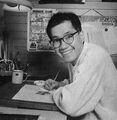
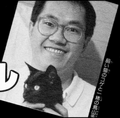
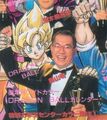

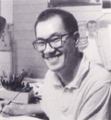
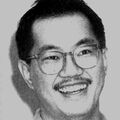




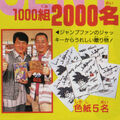



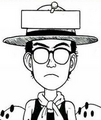
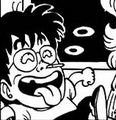
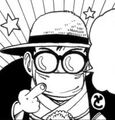


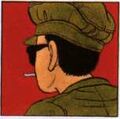
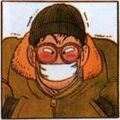
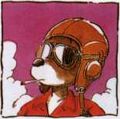

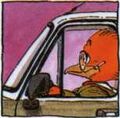
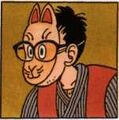
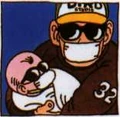

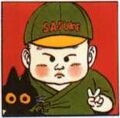
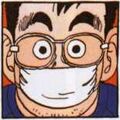
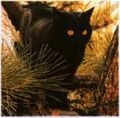
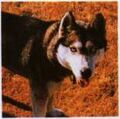
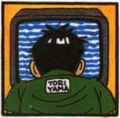
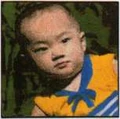
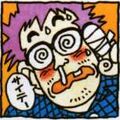
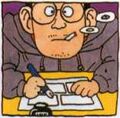
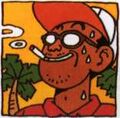
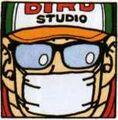
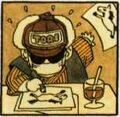
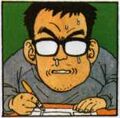
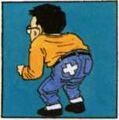
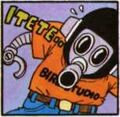
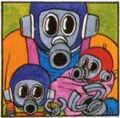
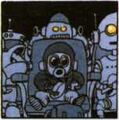
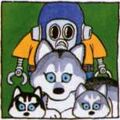
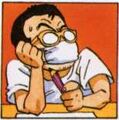
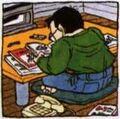
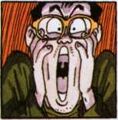
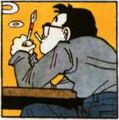
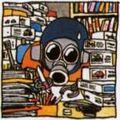
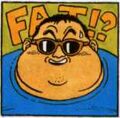
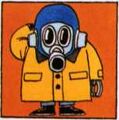
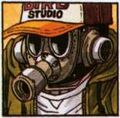
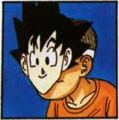
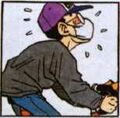
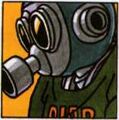
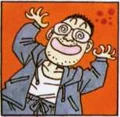
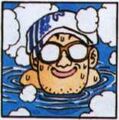
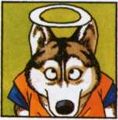
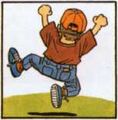
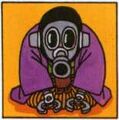
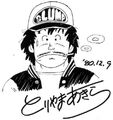
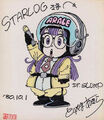






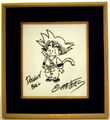













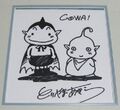
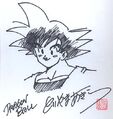
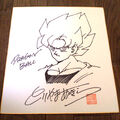
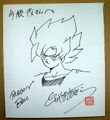
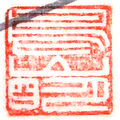


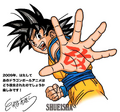











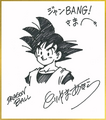




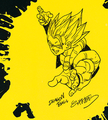

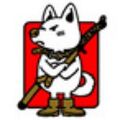















0 Response to "How To Draw Yourself As A Dbz Character"
Post a Comment